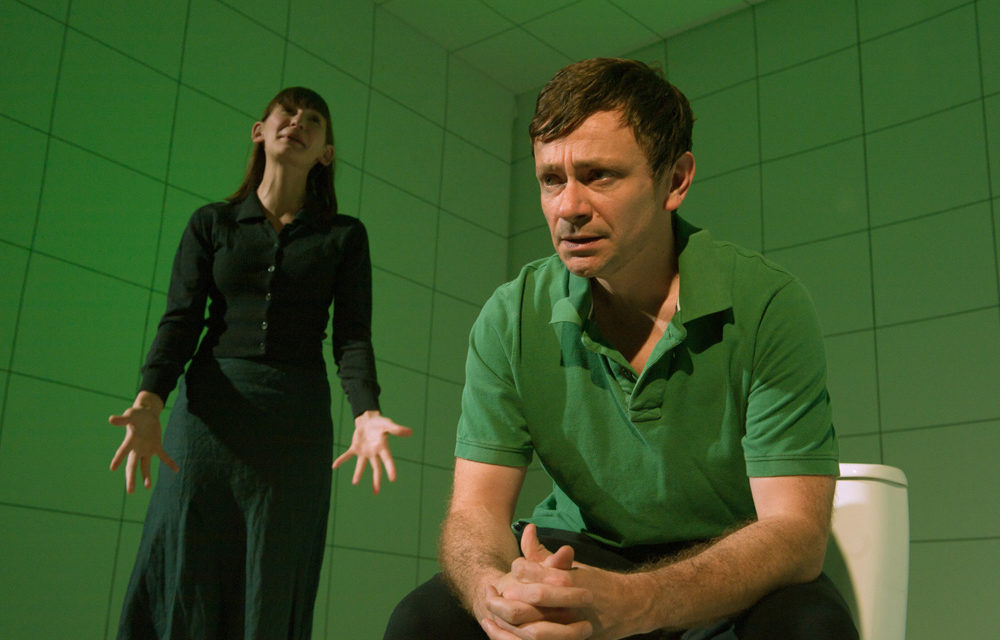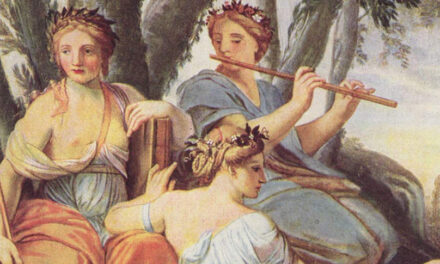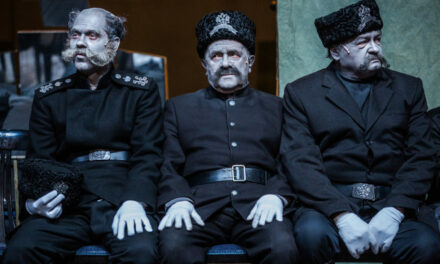There is a simple dinner-party game that can be played at no ostensible cost. The host asks, “Who is the greatest living British playwright?” and the guests state the case for their favorites. Until 1989, this game was always very short because the answer was inevitably Samuel Beckett, although it could be extensively prolonged by discussion of whether he was actually British, rather than Irish or even French (when he was born in Dublin in 1906, Ireland was part of the British Empire; he lived in France for most of his adult life). In the early 1990s, Harold Pinter would usually win, although as this decade wore on he was often accused of self-parody and of a failure to innovate. And his poems could always be relied on to raise a mocking laugh. His death in 2008 removed him from the game. Yet long before that Pinter’s dominance had been challenged by other candidates such as Tom Stoppard, Edward Bond, and Howard Barker. David Hare had his advocates; as did Alan Ayckbourn. As ever, such arguments about comparative aesthetics usually generated more heat than light. And were sometimes bad for the health of the dinner-party guests—rich food plus heightened blood pressure is not a recipe for a long life. But, oddly enough, the obviously right answer to the question of who is Britain’s greatest living playwright was rarely given. In this company of men, it is a woman. Clearly, the correct answer is Caryl Churchill.
No other living British playwright has been so consistently imaginative, innovative or intelligent as Churchill. Now in her 80s (she was born in 1938), she remains amazingly nimble and acute in her writing, penning a series of plays in the past couple of decades that are both gloriously entertaining and remarkably provocative. They are also all clearly different from one another. Whereas many other writers decline into self-plagiarism or lazy repetition, Churchill has proved to be capable of amazing her fans and her audiences time and time again. Just look at this small selection of her work since the mid-1990s: Blue Heart (double bill of Heart’s Desire and Blue Kettle, 1997), features vigorous linguistic games while simultaneously exploring the agonies of the human heart; Far Away (2000) presents both a response to the horrors of ethnic cleansing in the 1990s and a vision of the War on Terror (remarkably prescient as it was written before 9/11); A Number (2002) takes an issue, genetic cloning, and turns it into an intense account of fathers and sons; Drunk Enough To Say I Love You? (2006) explores the relationship between the USA and its client states by using the metaphor of a gay relationship; Seven Jewish Children (2009) anatomizes the history of European Jewry while implicitly protesting against the Israeli massacre of the Palestinians in Gaza.
All these plays—as well as her latest Love And Information (2012)—are distinctly Churchillian in their writing style, yet at the same time, each is different from the previous one. Each of them mixes the personal with the political in a thrillingly innovative way, and each challenges the director and actors to discover new ways of staging these scenarios. Above all, each of her plays feels as if their writer is not only pushing the boundaries of the theatre form but also that she is having fun while doing it. High art can be a pleasure as well as a serious business.
So, towards the end of a long career in which Churchill has produced three of the very best plays of the entire postwar theatrical canon—Cloud Nine (1979), Top Girls (1982) and Serious Money (1987, and all of them still immediately relevant to our lives today)—what is so admirable about Churchill is that she continues to demonstrate her creativity, yet always with a gentle, and often playful, touch. She is persuasive but never didactic, dogmatic, or hectoring. She is always political, but often quietly so, aware of ambiguity as well as passionately opposed to injustice. Over her work there frolics a light-footed, mischievous imp of joy.
In this context, her latest full-length play Love And Information is a cause for immense celebration. It is plainly a remarkable and exciting piece of theatre. In the original production directed by James Macdonald at the Royal Court in 2012, what was immediately striking was the shock that the play delivered to the idea of narrative. Each scene is seemingly unconnected to any other scene. If the idea of a story with a beginning, a middle and an end is highly valued in mainstream British theatre, this represents a complete subversion of this theatre form. In Macdonald’s production, 16 actors played dozens of different characters in some 50 scenes that are organized into seven sections. The running time was about 100 minutes, which means that some scenes were only two or three minutes long, and many much shorter. But the brevity did not detract from their meaning. The settings include the most familiar locations of contemporary life: the sofa, the double bed, the kitchen table; some are on a train, in an airport, canteen, garden, sauna; at a remote farm with no mobile phone signal, in a room being decorated, on the beach during a rainy day. And more.
The characters are equally varied and yet equally recognizable: lovers, couples, married couples, families, mothers and daughters, mothers and sons. Office workers and friends, scientists and celebrity-obsessed teens. Some believe in God, others are disturbed. Some are traumatized. It’s all very English, this fast-moving panorama of everyday life. And a London audience immediately understood the markers of British national identity: Radio Four jingles, Big Ben chimes, the wedding video, the hobbies, and the fads; the culture of secrecy. In this play, people compete in ballroom dancing contests; there is a cricket pitch. Rarely has national identity been so clearly represented on stage. Yet, at the same time, most of the content is universal in its relevance.
So out of these tiny slivers of theatrical information, Churchill provides teasing little glimpses of bigger stories. A celebrity in hiding, a hidden affair, a family secret, a traumatic accident, and especially the recurring theme of the devastation of depression. And, given its title, the whole play pulses with questions: is it better to know things—or not? How does knowing a secret affect a love relationship? Is it best not to know? What are the things that only a couple knows? What does God, or natural disasters, or irrational numbers, mean? Really mean, in terms of practice, philosophy and spirit? Last but surely not least, when our memory vanishes, does our personal identity disappear?
As the play’s title indicates, this is a drama about love and about information. So as well as these questions, there are confessions, disclosures, betrayals, and bemusements, and some secret pieces of information are shown to have advantages and some to be destructive. Some forms of love seem stronger than others. Sometimes having no feelings seems like a reasonable response to the pain of the world; at other times, it is just a sign of absence, the absence of love. Occasionally, during the play, you catch the silence of deep grief. Some information makes a difference; some doesn’t. One young man falls in love with a virtual girl—very foolish.
After the play is over, you get the strong feeling that Churchill provides a wealth of material, about technology as much as about feeling. It’s a play that sizzles with intelligence. So although she makes available little spasms of empathy, moments of connection, the big picture is of a chilly world suffering from information overload. In the play, as in the world we live in, there is too much information. And too little love. And the people who have suffered trauma and those afflicted by mental illness appear to be powerful metaphors for the human condition.
In performance, the play is striking in its originality. In the playtext, this experiential impression is confirmed by Churchill’s playwriting decisions. None of the dialogues are ascribed to any specific speaker so the director and actors have to decide how many people are speaking in each scene, and who exactly they are. Churchill’s only instruction is that “The characters are different in every scene.” She gives great freedom to the director and dramaturg by saying that while the seven sections should be played in the order that she has given, “the scenes within the sections can be played in any order within each section.” In addition, she has provided some brief “random scenes” which can be inserted at any point in the play, and maybe even in a different place at every performance. For greater thematic force, there are also some random lines of dialogue titled “Depression,” which can occur at any point and which could be spoken by the same character. The only specification is that the character to whom they are spoken “doesn’t respond”—this feels exactly right because being greeted by another person’s silence is a good definition of the experience of someone who suffers from depression.
So what kind of play is this? From this method of laying out the text, and from these stage directions, it is easy to identify this play as an open text. Ever since Martin Crimp’s masterpiece Attempts On Her Life, first staged at the Royal Court theatre in 1997, the idea of the open text has been a strong, if very rare, strand in new writing for the stage. In the open text, the writer provides a lot of written material, but actively refrains from being too prescriptive. Usually, dialogues are not ascribed to any individual speaker; the number of actors are not specified; there is plenty of room for collaboration between the writer and the director, and the actors. Since 1997, other examples of open texts include Sarah Kane’s 4.48 Psychosis (2000), Simon Stephens’s Pornography (2007) and some work by Tim Crouch, debbie tucker green, and Dennis Kelly. And, of course, plays by Caryl Churchill, including Love And Information.
The roots of the open text lie in Beckett, although this might appear to be an odd thing to say, given that Beckett’s texts are so prescriptive that every movement on stage is scripted in their stage directions. Surely, these are closed, if also very rich, texts? Yet Beckett’s work does have an open character too. In his refusal to discuss his characters’ backstories, to say where they are coming from, what their psychology is, Beckett throws the ball—to use an image from Gogo and Didi’s sparring in Waiting for Godot—to the director and actors. The identity of Beckett’s characters is a deliberately open question. In addition, his openness to the necessity for innovation in form is clearly an inspiration for many playwrights that came after him, including Crimp, Kane, and Churchill. Similarly, of course, Harold Pinter took up the idea of openness as regards the offstage backstories of his characters and unseen events. Lastly, in the 1970s, some of the wild and anarchic features of alternative theatre in Britain, with its improvisations and experiments, also fed the stream of open textuality. But the first explicitly open text, where the gesture is overt rather than implied, is Crimp’s Attempts On Her Life.
In recent years, such open-text plays by Churchill, Crimp and Kane—which are very much in a minority in contemporary British theatre—have been recruited (willingly or not) to the trend of Continental post-dramatic theatre (as elaborated by Hans-Thies Lehmann). It is easy to see why this has happened. All of these three writers have spent their careers in questioning the central tenets of the core aesthetics of British theatre, namely, naturalism and social realism (meaning realistic social context, not the Stalinist style of Social Realism characteristic of the postwar 20th-century Eastern European culture). The hegemony of naturalism (what you see is what you get) and social realism (what you see is the social) has marginalized other aspects of playwriting in Britain: metaphysical theatre is rare, metaphors are only occasionally glimpsed, absurdism and surrealism are frequently denied entry visas. In Britain, the pure post-dramatic theatre described by Lehmann is represented in the field of live art (which is separate and distinct from the mainstream of new writing). But although it is true that Churchill, Crimp, and Kane are more similar to Continental modernist writers than to many standard British playwrights, it is also true that they are working fully in the tradition of British new writing, a trend which begins with John Osborne’s Look Back In Anger in 1956 and continues with the most recent plays at London’s Royal Court theatre. And one of the defining features of British new writing is its love of everyday dialogue. The main linguistic characteristic of the work of Churchill, Crimp, and Kane is that their language is almost always spoken exchanges, the vernacular of the everyday. It is this fact that most radically distinguishes them from post-dramatic theatre. The best comparison is between their work and that of the Nobel Prize winner Elfriede Jelinek.
In Jelinek’s work, the typical linguistic unit is the Sprachflächen (language surface). As Lehmann says, these are “texts in which language appears not as the speech of characters—if there still are definable characters—but as an autonomous theatricality.” By contrast, for Churchill, Crimp, and Kane, the basic linguistic unit is the spoken phrase. All of Attempts On Her Life, perhaps with the exception of some of the scenario about the car advert, is recognizable as spoken dialogue. It is not a dream; it is not subjective fantasy; it is not found language. It is talk. All of 4.48 Psychosis is spoken dialogue, with the exception of a couple of passages that sound like diary entries or a couple more that are parodies of psychiatric questionnaires or lists of the effects of medication. But the core of the play is talk. Likewise, in Love And Information the core of the play is talk, talk, talk. The difference between the British tradition of the open text and the Continental practice of post-dramatic theatre is that the former retains its roots in character, spoken language, and real-life events.
The open text, including Love And Information, is both a gift to directors and a challenge. It is a gift because it liberates them from some of the more clichéd requirements of naturalism, allowing a more playful approach to the creation of stage pictures and stage situations. And Churchill’s texts always pulse with the joy of play. At the same time, the open text is also challenging: in theory, you could set Crimp’s Attempts On Her Life and his trilogy Fewer Emergencies (2005), or the middle open-text section of his latest, In The Republic Of Happiness (2013), anywhere on earth, or beyond. You could set such scenes on a boat in the Amazon rain forest, on a helicopter in Antarctica, or in a space station on Mars. These are scenes, and the same applies to much of Churchill’s recent work, that should liberate the director’s imagination. But often they seem to restrict it—freedom can cause panic as well as joy. Personally, I am tired of seeing productions of 4.48 Psychosis which are performed as monologues by a young female actor, or by a chorus of women. All of these productions tend to suggest that the play is autobiographical as if its author was just sharing her confessional thoughts. Wouldn’t it be more imaginative if 4.48 Psychosis was performed by a mainly male cast? In the war against cliché and repetition, great exertions are necessary. So when you approach Love And Information, which is by no means a perfect play (in performance there is always a risk that the reiterated repetition of its central gesture, the short moment of truth, makes the play seem mannered and formulaic), a particular courage is needed. After all, this is a work by Britain’s greatest living playwright. Long may she thrive.
The article appeared in Aleks Sierz on September 3, 2018, and has been reposted with permission.
This post was written by the author in their personal capacity.The opinions expressed in this article are the author’s own and do not reflect the view of The Theatre Times, their staff or collaborators.
This post was written by Aleks Sierz.
The views expressed here belong to the author and do not necessarily reflect our views and opinions.


















